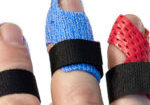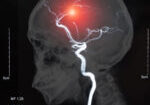Preston Lake 的文章评论
Moradi, A.、Sadr, A.、Ebrahimzadeh, MH、Hassankhani, GG 和 Mehrad-Majd, H.
(2020)。糖尿病会改变腕管松解术的疗效吗?证据来自
系统综述和荟萃分析。《手部治疗杂志》,33(3),
394–401。https://doi.org/10.1016/j.jht.2020.01.003
瘦子:
本研究的目的是系统地回顾当前可用的文献,以描述
手术的临床、功能和神经生理结果的差异
减压 糖尿病患者 和非糖尿病患者 腕管 综合症(CTS)。
作者试图澄清先前关于该主题的研究中所发现的矛盾的结果。
在杂草丛中:
这项荟萃分析回顾了 10 篇符合纳入标准和研究相关性的文章,其中 446
糖尿病患者和 2423 名非糖尿病患者接受腕管综合征手术减压治疗。所有研究
本综述纳入了 2 个回顾性队列研究和 7 个前瞻性队列研究。
糖尿病患者平均年龄为57.8岁,非糖尿病患者平均年龄为54.8岁。所有研究均纳入
使用波士顿腕管问卷 (BCTQ) 报告的结果,快速残疾
手臂、肩部和手部 (QuickDASH) 或神经传导研究。此外,研究
仅当患者接受开放手术或内镜手术松解并接受 6 个月
后续研究。本综述纳入的所有研究均为队列研究,其中 2 项为回顾性研究,7 项为
具有前瞻性。

主要发现
- 非糖尿病患者和糖尿病患者之间没有显著差异
对于使用 Quick DASH 和 BCTQ 报告结果的研究 - 非糖尿病患者和糖尿病患者之间没有显著差异
正中神经和尺神经的运动传导研究 - 非糖尿病患者的感觉传导结果明显更好
手腕至手掌部分和手腕至中指部分。 - 糖尿病患者的手术部位伤口感染率略高
患者,但结果并不具有统计学意义。
把它带回家:
本研究结果发现 CTS 减压手术在以下方面具有同等益处
术后症状和功能。作者发现,糖尿病患者
接受CTS减压手术的患者可以预期获得与无糖尿病患者相同的临床益处。有人提出,糖尿病患者感觉功能障碍水平较高
接受减压手术的患者与先前存在的糖尿病有关
神经病变。
评分:3/5
这是一项高水平的研究设计(荟萃分析),其中包括经过验证的临床结果
测量和出版偏见评估。作者提出了一个明确的临床问题,并
易于理解且无错误的方法论部分。本研究的局限性在于缺乏
随机对照试验、短期随访以及未能解释糖尿病神经病变
对结果的影响。
更多阅读内容
如何使用运动学贴布治疗肩部半脱位
如何使用运动学胶带治疗肩部半脱位 作者:Tayler Roost 什么是肩部半脱位?肩部半脱位是盂肱关节脱位。这可以分为创伤性、非创伤性或神经性的。创伤性肩部半脱位可能是由接触性运动或重复性肩部运动引起的。非外伤性肩部半脱位可能是间接引起的……
阅读更多通过改善肩肱节律来增加肩部范围
肩肱节律通常是治疗肩部疾病和肩部整体活动范围不足的关键组成部分。这也可能是在其他上肢疾病(例如桡骨远端骨折、肌腱损伤和肘部损伤)康复期间预防肩部疾病的关键组成部分。肩胛肱节律是……的节律
阅读更多5+ 常见槌状手指夹板
手指矫形器可能很坚固,在手部治疗中槌形矫形器也不例外。在制作普通的槌状手指夹板时,用槌状手指进行 15 度 DIP 延伸的协议很难管理。小手指上的小夹板也很难调整尺寸并用绑带固定......
阅读更多视频增强镜治疗中风后上肢康复
Kim, H.、Kim, J.、Jo, S.、Lee, K.、Kim, J. 和 Song, C. (2023)。视频增强镜治疗中风后上肢康复:一项随机对照试验。神经病学杂志,270(2), 831-842。文章评论:Shannon Skowbo The Skinny:这项单盲、随机对照试验旨在评估镜像疗法对中风患者的效果……
阅读更多注册即可直接将更新发送到您的收件箱!
注册我们,我们将定期向您发送有关手部治疗的所有内容的博客文章、每次上传新视频和教程时的通知,以及讲义、协议和其他有用信息。






